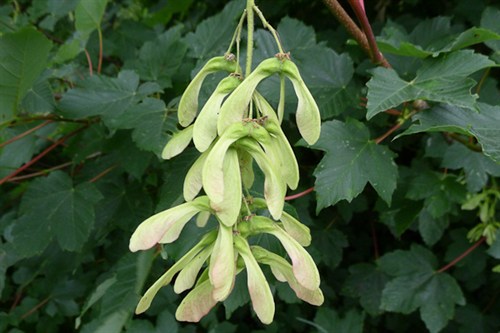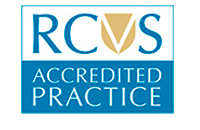24 hour contact: 01707 666297
Atypical Myopathy Fact File
Atypical myopathy (sycamore myopathy) is a severe and often fatal muscle disorder caused by ingesting sycamore seeds, leaves or seedlings.

It is fatal for around three quarters of affected horses. Some horses appear to be more susceptible than others, perhaps due to genetic differences. Reports of cases began in the 1940s but there is evidence supporting a marked increase in recent years.
There are more than 25 species of Acer tree and and not all species have the HGA toxin. (Hypoglycin A). HGA toxin concentrations vary between plant samples derived from different trees or seedlings from them. Understandably, horse owners and yard owners want to minimise the exposure to anything which is poisonous to horses.
Download a copy of RVC's Owners' Fact File on Atypical Myopathy from the Comparative Neuromuscular Diseases Laboratory - Diagnostic Services page
Following research that was supported by the Horse Trust and RVC's Animal Care Trust, the RVC now offer vets and owners atypical myopathy testing. For information on pricing and sample submission see the RVC Comparative Neuromuscular Diseases Laboratory
As part of RVC’s ongoing commitment to scientific innovation - our teams are involved in research (supported by the Horse Trust) concerning the influence of genes on susceptibility and the impact of different treatments on the toxic effects of hypoglycin A. They are also establishing the reasons why different trees vary in their toxin production and other risk factors
Causes
Atypical myopathy is caused by horses eating sycamore seeds that fall onto pasture in Autumn and Winter, and their germinating seedlings in Spring.
Seeds and seedlings contain the toxin hypoglycin A (HGA) which slows or stops energy production in muscle and heart
Some apparently unaffected horses have high concentrations of HGA in their blood suggesting that some horses are more susceptible to the toxin than others.
Clinical Signs
- General weakness : horses struggle to walk, stand and breathe
- Many horses develop heart problems.
- Horses appear depressed with low hanging heads
- Muscle trembling
- Signs of severe colic - yet, unlike colic, they still have an appetite
- Brown or dark red urine
- Severely affected horses become unable to stand
Diagnosis
Vets consider the horse’s environment as well as symptoms reported and those observed during an examination.
Diagnosis requires a variety of tests available to referring vets from the RVC Comparative Neuromuscular Diseases Laboratory.
Treatment
As confirmation can take several days, vets often start treatment immediately and before official confirmation. Your horse may require admission to a specialist equine hospital for 24 hour advanced care. If horses survive the first few days of treatment they usually go on to recover completely, although this can take several months.
Prevention
The following steps can be taken to reduce horses' risk to atypical myopathy
- Provide supplementary forage during Autumn
- Clear fallen sycamore leaves and seeds from grazing areas
- Check neighbouring areas for high risk plants/seeds as some ‘helicopter’ seeds can travel up to 200 yards
- Test for the presence of HGA in your own horses’ pastures
The RVC's Comparative Neuromuscular Diseases Laboratory offers horse owners and stable/yard owners a sycamore sample test for identifying plants that contain the HGA toxin known to cause atypical myopathy.
Key points
Diagnosis of atypical myopathy, despite its name, has become more common in recent years.
Evidence suggests it is caused by horses eating fallen sycamore seeds and their germinating seedlings.
It is a rapid onset disease affecting muscles, including the heart.
It is fatal for around three quarters of affected horses.
Some horses appear to be more susceptible than others, perhaps due to genetic differences
RVC provides diagnostic tests for referring vets dealing with suspected atypical myopathy cases
RVC provides atypical myopathy tests for horse owners & yard owners to establish if they have plants on their property which contain the HGA toxin
For information on testing (for vets and owners) see Comparative Neuromuscular Diseases Laboratory
Frequently asked questions
Our RVC's Owners' Fact File on Atypical Myopathy (available on this page) has a FAQ's section which should answer many of your queries.
Otherwise for:
- queries about samples - email us at neuromuscular@rvc.ac.uk or check the webpage for more information RVC Comparative Neuromuscular Diseases Laboratory - Diagnostic Services
- horse-related issues - contact equinereception@rvc.ac.uk or call us on 01707 666297

